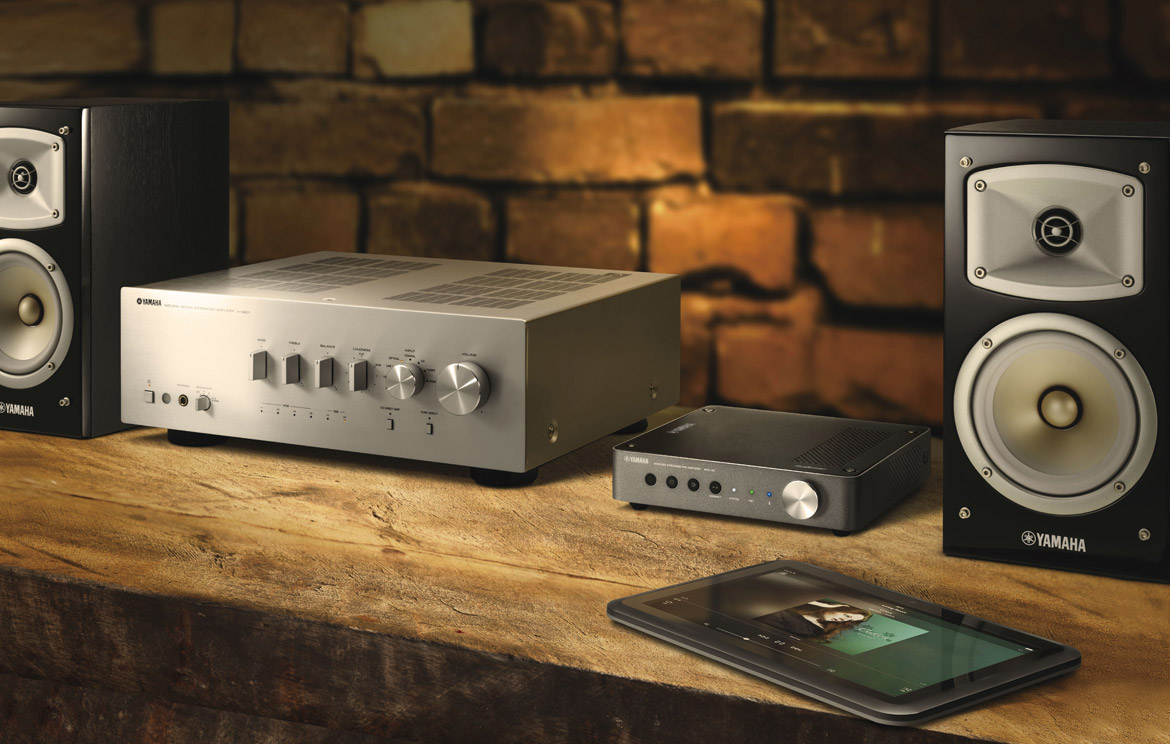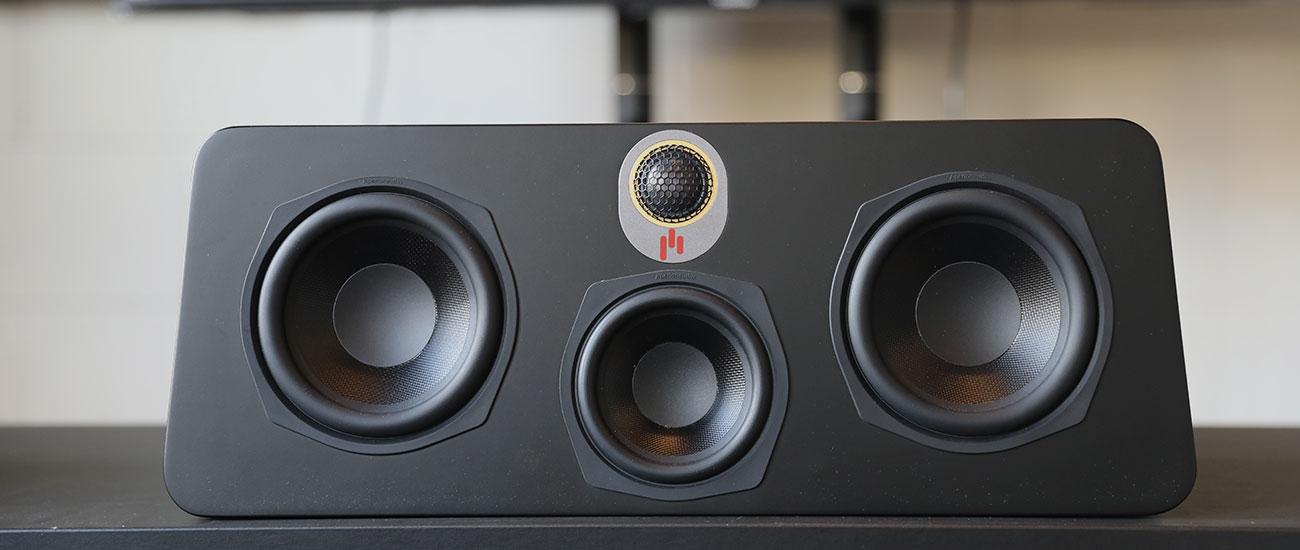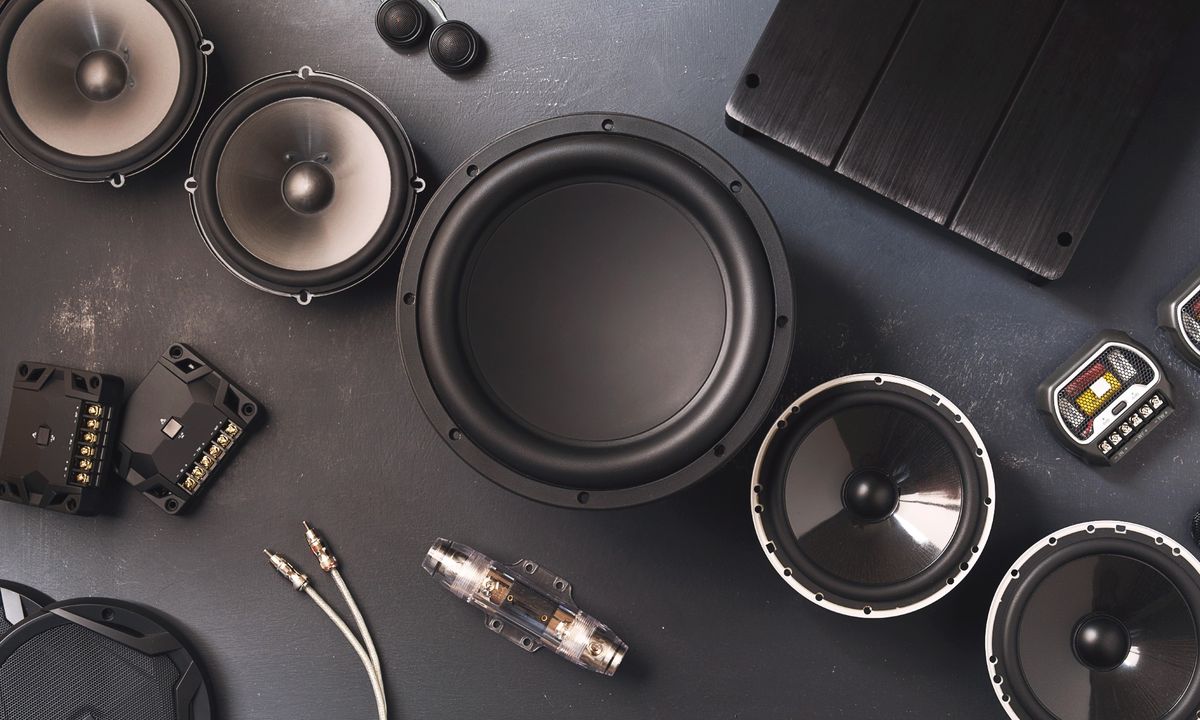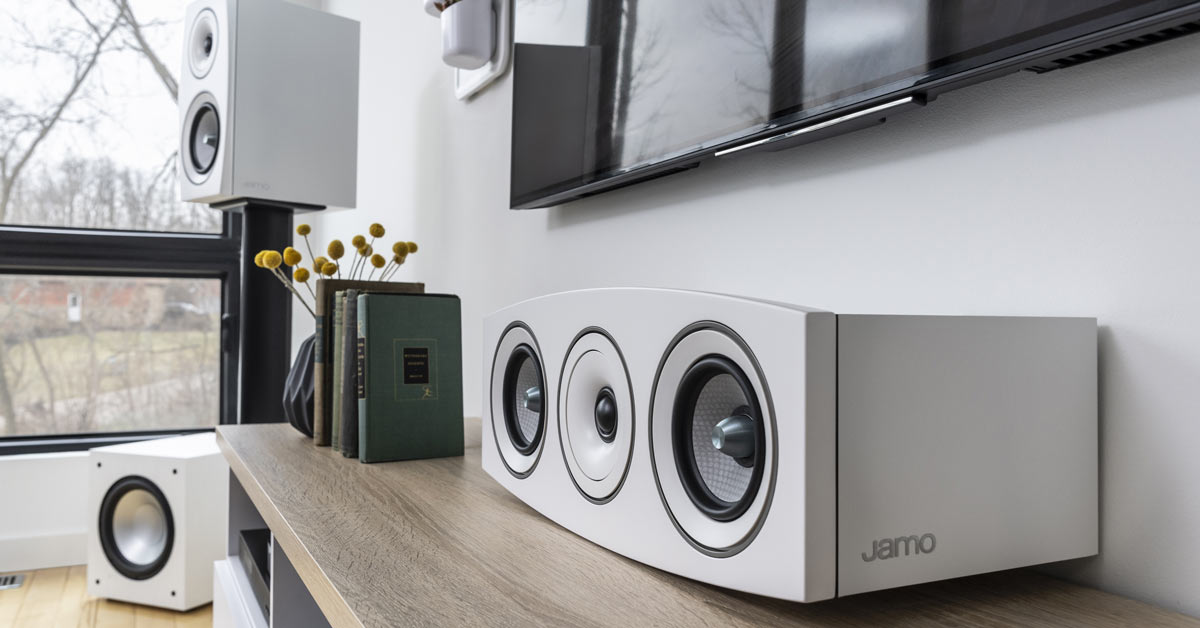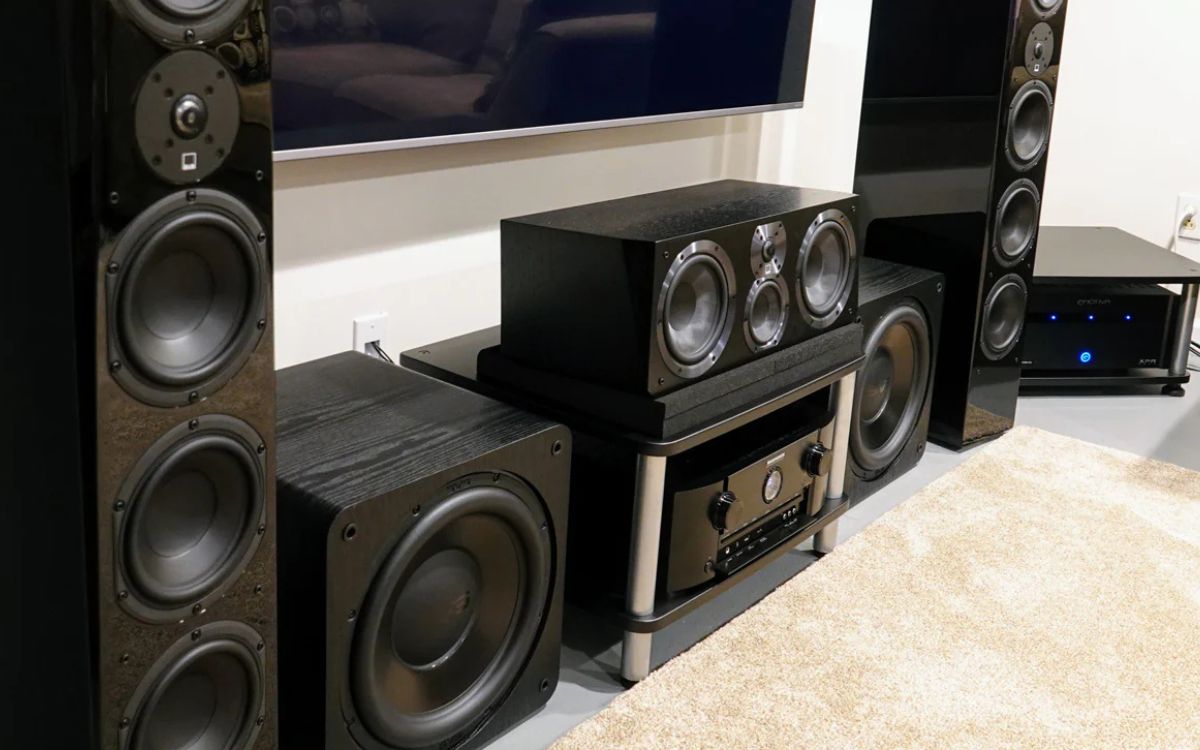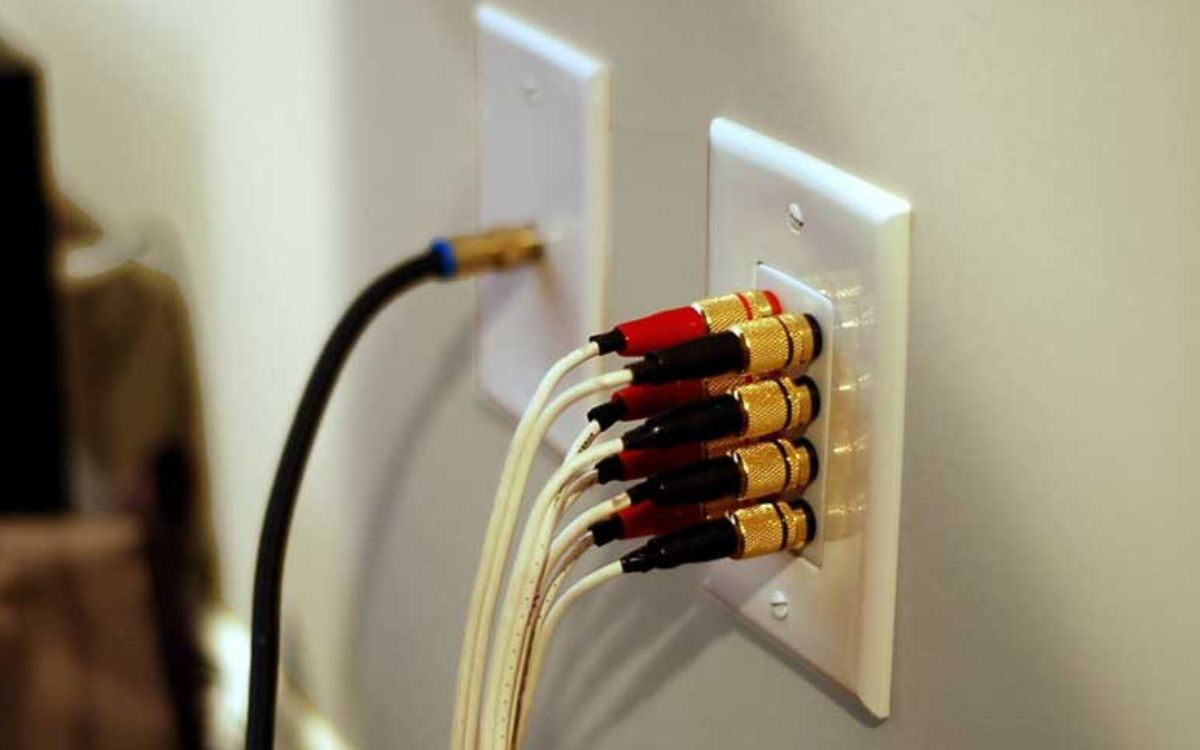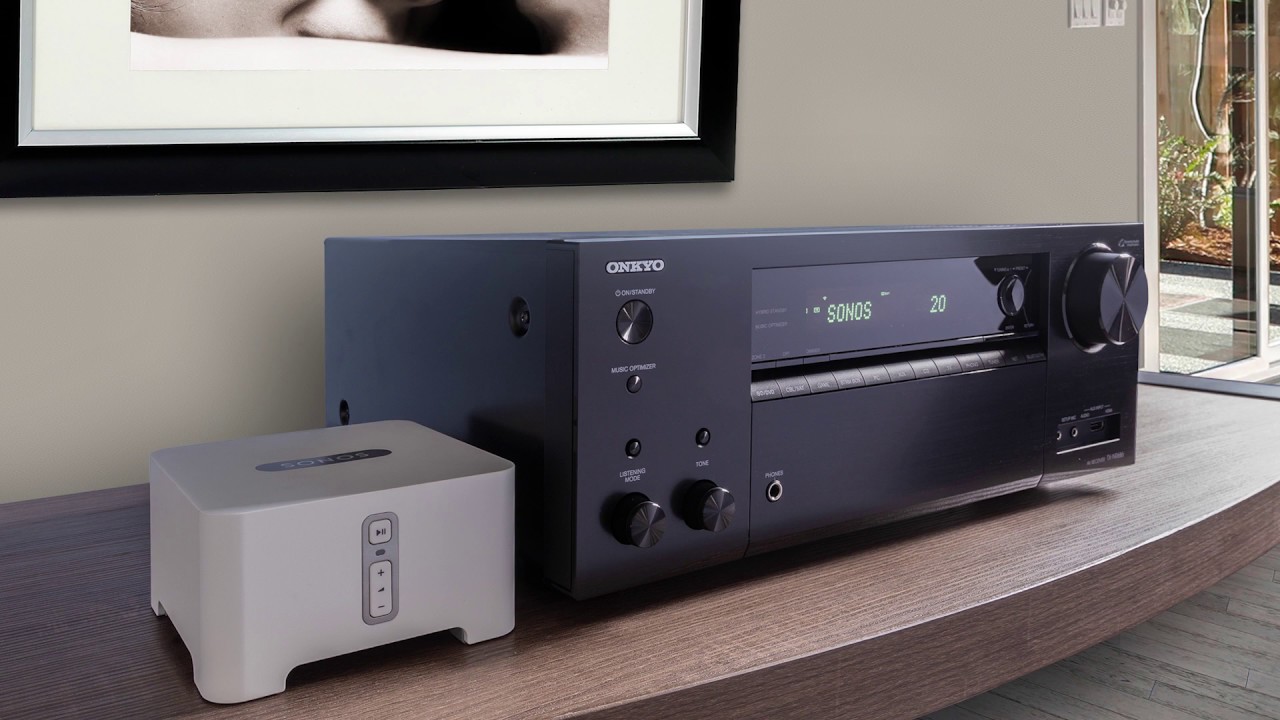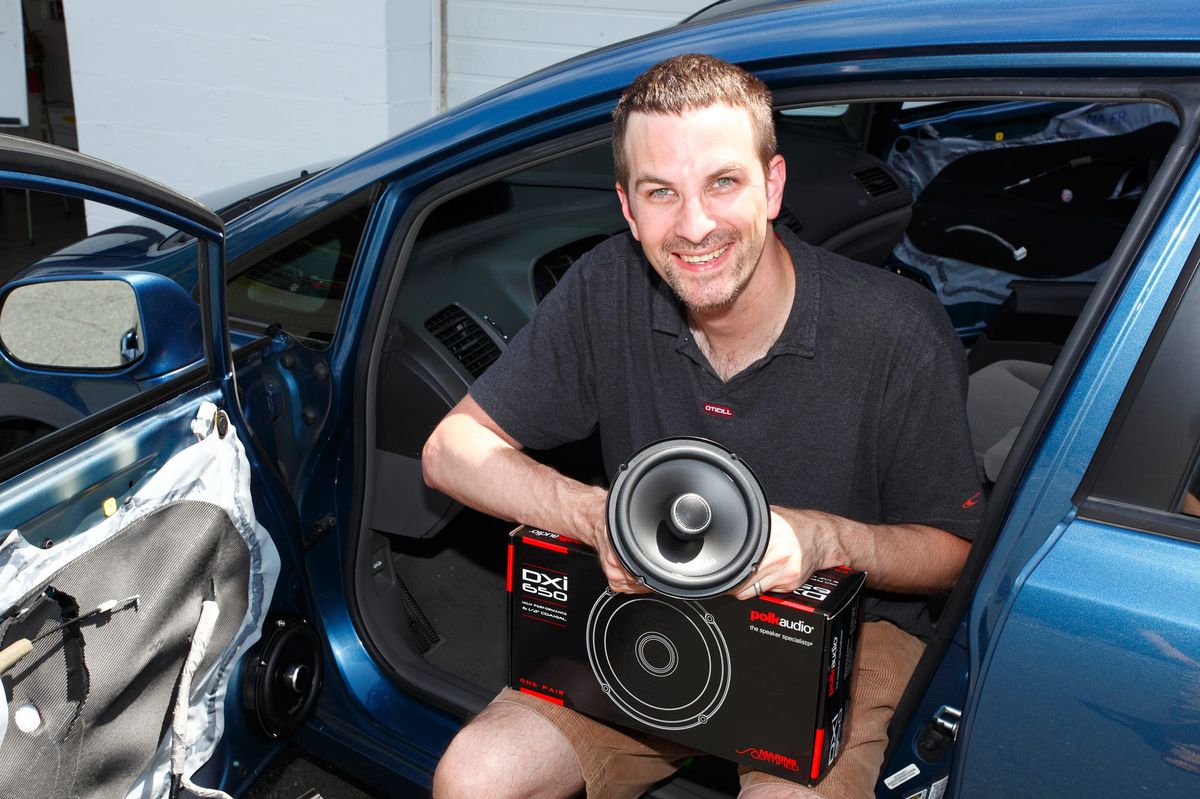Home>Production & Technology>Stereo>How Does A Stereo Speaker Use An Electromagnet To Produce Sound
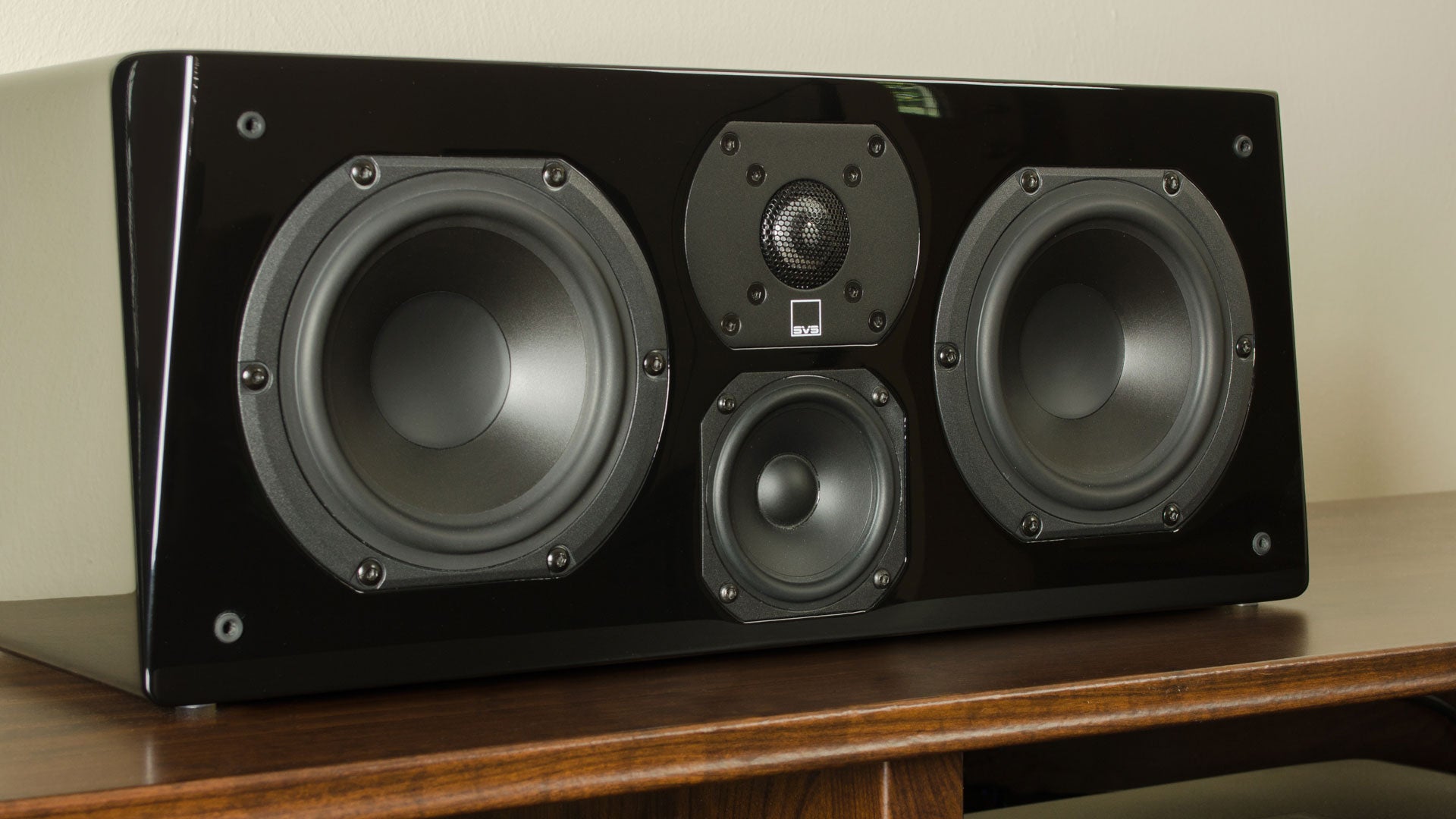

Stereo
How Does A Stereo Speaker Use An Electromagnet To Produce Sound
Modified: January 22, 2024
Learn how stereo speakers utilize electromagnets to generate sound and enhance your audio experience. Explore the inner workings of this technology and its impact on your listening pleasure.
(Many of the links in this article redirect to a specific reviewed product. Your purchase of these products through affiliate links helps to generate commission for AudioLover.com, at no extra cost. Learn more)
Table of Contents
Introduction
Welcome to the fascinating world of stereo speakers! These remarkable devices have revolutionized the way we experience sound, bringing music, movies, and other audio content to life with clarity and depth. But have you ever wondered how a stereo speaker actually works? How is it able to produce sound that is so rich and immersive?
In order to understand the inner workings of a stereo speaker, we need to delve into the realm of electromagnetism. Electromagnetism is the phenomenon that governs the interaction between electricity and magnetism, and it lies at the heart of how speakers are able to convert electrical signals into audible sound.
In this article, we will explore the basics of electromagnetism, the structure of a stereo speaker, and the working principle behind its remarkable ability to produce sound. We will also delve into the components and materials used in speaker construction, as well as the factors that affect sound quality. Additionally, we will touch on advancements in speaker technology that have further enhanced the audio experience. By the end of this article, you will have a clear understanding of how stereo speakers work and what makes them so integral to our modern audio setups.
So, let’s embark on this sonic journey and uncover the secrets of stereo speakers as we explore the fascinating world of electromagnetism and sound production!
Basics of Electromagnetism
At its core, electromagnetism is the study of the relationship between electricity and magnetism. It was first discovered and formulated by the brilliant physicist James Clerk Maxwell in the 19th century. Electromagnetism explains how electric currents generate magnetic fields and how varying magnetic fields can induce electric currents.
One of the fundamental concepts in electromagnetism is the relationship between electric current and magnetism. When an electric current passes through a conductor, it generates a magnetic field around it. This interaction is made possible by the movement of negatively charged particles called electrons. As these electrons flow through the conductor, they create a magnetic force that encircles the wire.
This phenomenon forms the basis of how stereo speakers produce sound. By harnessing the power of electromagnetism, speakers are able to convert electrical signals into mechanical vibrations and eventually into audible sound.
Another key concept in electromagnetism is Faraday’s law of electromagnetic induction, named after the famous physicist Michael Faraday. This law states that a change in the magnetic field within a coil of wire will induce an electric current in the wire. This principle is crucial in understanding how the electrical signals from an audio source are transformed into sound waves by a speaker.
Overall, the basics of electromagnetism provide the foundation for understanding how stereo speakers utilize the interaction between electricity and magnetism to produce sound. Through the concepts of electric currents and magnetic fields, speakers are able to harness the power of electromagnetism and deliver immersive audio experiences for listeners.
Structure of a Stereo Speaker
A stereo speaker is a complex device with a carefully designed structure that allows it to efficiently convert electrical energy into sound waves. Understanding the different components and their functions is crucial to comprehending how a speaker operates.
Let’s start with the most visible part of a speaker – the cabinet. The cabinet is the outer shell of the speaker and serves multiple purposes. It provides a sturdy structure to house the internal components, protects them from external damage, and prevents sound waves from interfering with each other. The cabinet is often made of wood, plastic, or other materials that minimize resonance and unwanted vibrations.
Inside the cabinet, you’ll find the driver or the loudspeaker. This is the heart of the speaker and consists of several essential elements. The main components of a driver are the cone, the voice coil, the magnet, and the suspension system.
The cone, also known as the diaphragm, is a lightweight and rigid material, such as paper or composite materials like Kevlar or carbon fiber. The cone is responsible for converting the electrical signals into sound waves by vibrating back and forth rapidly.
The voice coil is a wire wound around a cylindrical former attached to the back of the cone. When an electrical current passes through the voice coil, it becomes an electromagnet, and its interaction with the permanent magnet generates a magnetic field. This magnetic field interacts with the cone, causing it to move in response to the electrical signals, thus producing sound waves.
The magnet in the driver is usually a powerful permanent magnet, typically made of neodymium or ferrite. It provides the necessary magnetic field for the voice coil to interact with, allowing the speaker to convert electrical energy into mechanical vibrations.
The suspension system, consisting of the surround and the spider, ensures proper alignment and stability of the cone and voice coil. The surround acts as a flexible ring that allows the cone to move freely while maintaining its position, while the spider provides support and control for the cone’s movement.
Additionally, a stereo speaker also includes a crossover network, which is an essential component responsible for dividing the audio signal into different frequency ranges and directing them to the appropriate driver. This ensures that high frequencies are sent to the tweeter, while lower frequencies are directed to the woofer, for example.
By understanding the structure of a stereo speaker and the function of its various components, we can better grasp how these devices are able to deliver high-quality sound experiences.
Working Principle of a Stereo Speaker
The working principle of a stereo speaker can be summarized in a few straightforward steps. It involves the conversion of electrical signals into mechanical vibrations and, ultimately, into audible sound waves. Let’s explore this process in detail.
1. Input of Electrical Signals: The journey begins with the input of electrical signals from an audio source such as a smartphone, computer, or amplifier. These signals represent the variations in sound waves generated by the audio source.
2. Amplification: The electrical signals often go through an amplification stage to increase their power level. This is commonly done with the help of an amplifier, which strengthens the weak electrical signals to a level suitable for driving the speaker.
3. Crossover Network: In speakers with multiple drivers, a crossover network plays a crucial role. It receives the amplified signals and splits them into different frequency ranges. The high-frequency signals are directed to the tweeter, while the low-frequency signals are sent to the woofer or other suitable drivers. This ensures that each driver receives the appropriate frequency range it is specialized in reproducing.
4. Electromagnetic Interaction: Now, let’s focus on a single driver, such as the woofer. The electrical signal is passed through the voice coil, which is wound around a cylindrical former attached to the back of the cone. When the electrical signal flows through the voice coil, it generates a magnetic field. This magnetic field interacts with the fixed permanent magnet in the speaker, creating forces that push and pull the cone of the driver.
5. Vibrations and Sound Production: As the voice coil experiences the alternating magnetic forces, it rapidly moves the cone back and forth. This movement of the cone creates vibrations in the surrounding air and produces sound waves. The cone’s vibrations correspond to the electrical signal’s variations, faithfully reproducing the original sound.
6. Sound Output: The sound waves generated by the vibrating cone are radiated into the surrounding environment through the speaker’s grille or other openings in the cabinet. The size, shape, and design of the cabinet contribute to the dispersion and quality of the sound produced.
As these steps are repeated continuously in response to the electrical signals, the stereo speaker produces sound that faithfully represents the original audio input. The precision and accuracy of the driver’s movements and the design of the entire system contribute to the speaker’s ability to reproduce sound with clarity, detail, and depth.
Conversion of Electrical Signals to Sound
The conversion of electrical signals into audible sound is the core function of a stereo speaker. This process involves a series of steps that transform the electrical energy into mechanical vibrations and ultimately produce sound waves that we can hear.
1. Amplification: The electrical signals received from an audio source may be weak and need to be amplified before being sent to the speaker. An amplifier boosts the power of these signals to a level that can effectively drive the speaker’s components.
2. Splitting of Frequency Ranges: In the case of speakers with multiple drivers, a crossover network is utilized. It divides the incoming electrical signals into different frequency ranges. The high-frequency signals are directed to the tweeter, while the low-frequency signals are directed to the woofer or other appropriate drivers. This ensures that each driver reproduces the specific frequency range it is designed to handle.
3. Conversion of Electrical Signals to Mechanical Vibrations: The heart of the speaker lies in the driver or loudspeaker. The voice coil, which is connected to the cone, receives the amplified electrical signals. When an electrical current flows through the voice coil, it creates a magnetic field due to its interaction with the permanent magnet. This magnetic field causes the voice coil and cone assembly to move back and forth rapidly.
4. Relationship Between Electrical Signals and Cone Movement: The movements of the cone are directly proportional to the electrical signals it receives. As the electrical current varies, the magnetic field of the voice coil changes, resulting in corresponding variations in the position of the cone. These movements generate mechanical vibrations in the cone.
5. Production of Sound Waves: The mechanical vibrations of the cone compress and decompress the surrounding air, creating sound waves. These sound waves consist of compressions (higher pressure regions) and rarefactions (lower pressure regions). The frequency and amplitude of the electrical signals determine the frequency and volume of the produced sound waves.
6. Dispersion of Sound: The sound waves generated by the vibrating cone are radiated into the surrounding environment through the speaker’s grille or other openings in the cabinet. The design and shape of the speaker cabinet impact the dispersion of the sound waves, influencing factors such as directionality and the creation of resonances.
By converting electrical signals into mechanical vibrations and sound waves, a stereo speaker allows us to experience music, movies, and other audio content with remarkable fidelity and immersion.
Components and Materials Used in a Stereo Speaker
A stereo speaker is composed of various components and utilizes specific materials to ensure optimal performance and sound reproduction. Let’s dive into the key components and materials commonly found in stereo speakers.
1. Cone/Diaphragm Material: The cone or diaphragm is a crucial component responsible for converting electrical signals into sound waves. It is typically made of lightweight and rigid materials such as paper, polypropylene, or composite materials like Kevlar or carbon fiber. These materials offer a good balance between stiffness for accurate sound reproduction and flexibility for efficient movement.
2. Voice Coil: The voice coil is a wire wound around a cylindrical former attached to the back of the cone. It plays a vital role in the conversion of electrical signals into mechanical vibrations. The wire is often made of copper or aluminum, known for their electrical conductivity and heat resistance.
3. Magnet: The magnet is a permanent magnet that creates a magnetic field in the driver. It is usually made of materials like neodymium or ferrite, which provide strong and stable magnetic flux for efficient interaction with the voice coil.
4. Suspension System: The suspension system includes the surround and spider. The surround is a flexible ring that attaches the outer edge of the cone to the speaker frame, allowing it to move freely while maintaining stability. It is commonly made of materials like rubber or foam. The spider provides support and control for the movement of the cone, ensuring proper alignment and restoring the cone to its neutral position after vibrations. It is typically made of materials like fabric or treated paper.
5. Cabinet Material: The cabinet serves as the enclosure for the speaker components and plays a crucial role in reducing resonance and unwanted vibrations. Common materials used for speaker cabinets include wood, plastic, and composite materials. Wood, such as MDF (medium-density fiberboard) or plywood, is often favored for its acoustic properties and ability to minimize resonance.
6. Crossover Network Components: In speakers with multiple drivers, a crossover network is used. It includes components like capacitors, inductors, and resistors. Capacitors allow the passage of high-frequency signals while blocking low frequencies, while inductors perform the opposite function. Resistors modify the volume levels of specific frequency ranges to achieve a balanced sound output.
7. Wiring and Connectors: High-quality wiring and connectors are crucial for maintaining signal integrity and minimizing signal loss. Copper wire with appropriate gauge size is commonly used, and soldered connections ensure a secure and reliable connection between components.
These components and materials collectively contribute to the overall performance and sound quality of a stereo speaker. The careful selection and integration of these elements are essential in creating speakers that deliver immersive and accurate audio experiences.
Factors Affecting Sound Quality in Stereo Speakers
The sound quality produced by stereo speakers can vary significantly based on several factors. These factors play a crucial role in determining the accuracy, clarity, and overall listening experience. Let’s explore some key factors that affect the sound quality in stereo speakers.
1. Driver Quality: The driver, including the cone, voice coil, magnet, and suspension system, is a vital component that directly influences sound quality. High-quality drivers with precise construction and materials ensure accurate sound reproduction, minimal distortion, and consistent performance across different frequency ranges.
2. Cabinet Design: The design and construction of the speaker cabinet impact the overall sound quality. A well-designed cabinet minimizes unwanted resonances, vibrations, and coloration of sound. Rigidity, internal bracing, and strategic placement of damping materials within the cabinet can significantly enhance the accuracy and clarity of the sound produced by reducing unwanted vibrations and resonances.
3. Crossover Design: In speakers with multiple drivers, the crossover network plays a crucial role in directing the appropriate frequencies to the respective drivers. A well-designed crossover with high-quality components ensures seamless integration between drivers and minimizes phase cancellations or other distortions that can negatively impact sound quality.
4. Component Matching: The quality and compatibility of the components used in a speaker system also influence sound quality. Matching components such as drivers, crossover components, and amplifiers that are designed to work well together can result in improved overall performance and synergy, minimizing potential issues like impedance mismatch or frequency response irregularities.
5. Material Selection: The choice of materials used in the construction of various speaker components can affect sound quality. Materials with specific acoustic properties, such as the cone and cabinet materials, can contribute to accurate sound reproduction, minimized resonances, and reduced coloration or distortion. High-quality materials with appropriate stiffness, damping characteristics, and resonance control properties are desirable for achieving optimal sound reproduction.
6. Room Acoustics: The acoustic properties of the listening room or environment play a significant role in sound quality. Factors such as room size, shape, wall materials, and furniture placement can influence sound reflections, resonances, and the overall balance of frequencies perceived by the listener. Proper room treatment, including the strategic placement of absorptive and diffusive materials, can greatly improve sound quality by reducing unwanted reflections and optimizing the listening experience.
7. Source Quality and Amplification: The quality of the audio source (such as recordings or streaming) and the amplification equipment used to drive the speakers also impact sound quality. Using high-resolution audio sources and amplifiers capable of delivering sufficient power and clean signal amplification can result in improved dynamics, clarity, and overall fidelity.
By considering and optimizing these factors, manufacturers and audio enthusiasts can achieve exceptional sound quality in stereo speakers, delivering a more immersive and enjoyable listening experience.
Advancements in Speaker Technology
The world of speaker technology has witnessed significant advancements over the years, leading to improvements in sound quality, efficiency, and overall performance. These advancements have enhanced our audio experiences and pushed the boundaries of what is possible in speaker design. Here are some notable advancements in speaker technology:
1. Digital Signal Processing (DSP): Digital Signal Processing has revolutionized the way speakers reproduce sound. DSP techniques allow for precise control and manipulation of audio signals, enabling features like equalization, room correction, and advanced crossover designs. DSP technology has greatly improved the accuracy and customization of sound reproduction.
2. Wireless Connectivity: Wireless speaker systems have gained popularity, thanks to advancements in wireless technology such as Bluetooth, Wi-Fi, and AirPlay. These technologies eliminate the need for traditional wired connections, allowing for greater convenience and flexibility in speaker placement. Wireless connectivity also enables multi-room audio setups and seamless integration with other devices.
3. Miniaturization and Portability: The development of compact and portable speakers has been a significant advancement in recent years. Miniaturization techniques, along with improvements in battery technology, have made it possible to pack powerful sound into smaller form factors. This has led to the rise of portable Bluetooth speakers that can deliver impressive sound quality on the go.
4. Advanced Driver Materials: Advancements in materials science have led to the development of driver components with enhanced performance characteristics. For example, the use of exotic materials like graphene, beryllium, and synthetic diamonds in the construction of driver components has resulted in improved rigidity, lightweight, and reduced distortion. These materials offer higher accuracy and better overall sound quality.
5. Planar Magnetic Technology: Planar magnetic drivers have gained attention for their ability to produce highly accurate sound reproduction. These drivers utilize a thin diaphragm with a conductive layer to interact with magnets, resulting in precise and detailed sound across the frequency spectrum. Planar magnetic technology offers superior transient response and spatial imaging.
6. Active Speaker Systems: Active or powered speaker systems have become increasingly popular. In these systems, the speakers have their built-in amplification, eliminating the need for an external amplifier. Active speakers offer improved control over each driver, ensuring optimized audio performance and simplified setup.
7. Smart Speaker Integration: Smart speakers, equipped with virtual assistants like Amazon Alexa, Google Assistant, or Apple Siri, have become a significant trend in recent years. These speakers can not only play music but also provide voice control and access to various online services, giving users a seamless and integrated smart home audio experience.
These advancements in speaker technology continue to push the boundaries, offering users more immersive and personalized audio experiences. Whether it’s through improved sound quality, wireless connectivity, portability, or smart capabilities, these advancements have transformed the way we interact with and enjoy sound through speakers.
Conclusion
The world of stereo speakers is a fascinating realm where science, engineering, and art converge to create immersive soundscapes. By harnessing the principles of electromagnetism, speakers have the remarkable ability to convert electrical signals into audible sound waves that captivate our senses.
In this article, we have explored the basics of electromagnetism, the structure of a stereo speaker, and its working principle. We have seen how electrical signals are transformed into mechanical vibrations, leading to the production of sound waves that bring our audio content to life.
Additionally, we have delved into the components and materials used in stereo speakers, understanding their crucial roles in sound reproduction and overall performance. We have also discussed the various factors that impact sound quality, such as driver design, cabinet construction, and room acoustics.
Furthermore, we have highlighted the advancements in speaker technology that have revolutionized the audio industry. From digital signal processing and wireless connectivity to miniaturization and planar magnetic technology, these advancements have expanded the possibilities of sound reproduction and enhanced our audio experiences.
As we continue to embrace these advancements, we can look forward to even more exciting developments in the world of stereo speakers. The quest for better sound quality, improved efficiency, and increased portability will drive innovation, further enriching our audio encounters.
In conclusion, stereo speakers are remarkable devices that combine art and science to transform electrical signals into immersive sound experiences. Whether you’re enjoying music, watching movies, or engaging in gaming, the quality of your speakers plays a vital role in the enjoyment and realism of the audio content. So, let’s cherish the advancements in speaker technology and savor the remarkable soundscapes that stereo speakers offer.

